Today, when so many companies become international, it is very important to be at home with a foreign language. We are all aware of this fact. Therefore, while some of us are looking for effective ways of learning new languages, others are trying to find an optimal solution to the problem, in particular, by creating education mobile and web platforms. And the most successful services of the sort can also be very good sources of income for their owners. A bright example is Duolingo.
Do you want to take up the lead and make money on language apps? Then read our article! Our tips will help you understand how to make an app like Duolingo.
What is Duolingo?
Duolingo is a free platform for language learning and crowdsourcing translations.
The main advantage that this service provides is the opportunity to learn the language from scratch. The training program is organized hierarchically and presented as a tree of achievements. Getting points for each learned lesson, students are moving from level to level (of course, such a transition is possible only when a certain number of points has been reached).
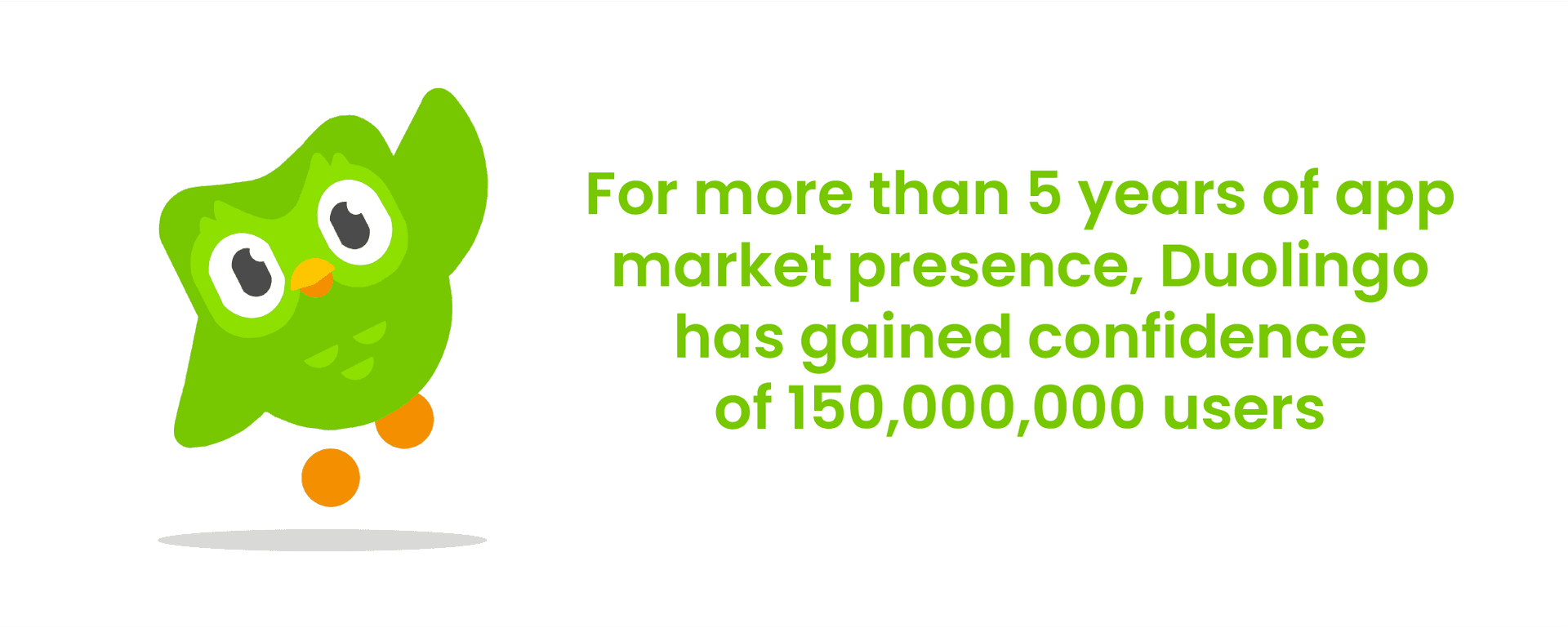
Let's now see how the best language learning apps work, that is, Duolingo alternatives.
How language learning apps work
To develop a language app like Duolingo, you should understand the operation of such programs. Let's figure it out!
So, what possibilities must the language application offer?
- Training exercises. Offer users the maximum number of different lessons designed to learn new words, read and translate text, train listening comprehension, etc.
- Video content. To develop a language application similar to Duolingo, one should provide the service with useful video content: music videos, fragments of movies, etc... Of course, the presence of subtitles (and maybe translation) is mandatory!
- Books. What is better than the opportunity to read a book by your favorite authors in the original? Especially if the text is accompanied by useful hints and tips (such as translations of difficult phrases)? Of course, novice students won't master the task, but those who want to further improve their level of learning languages will be grateful to you.
- Сhatbot. It’s another useful possibility inherent in learning apps like Duolingo. The bot task is to answer basic user questions (regarding the pronunciation of a specific word, etc). Besides, you can provide a user with the chance to ask a bot to assess the pronunciation level of a phrase that he (or she) has recorded (and, if possible, to make a translation). For this, the speech translation function needs to be implemented, which may lead to increasing the project cost. But such an approach also improves the UX factor of your language learning service. We guess it's worth additional expenses, right?
Do you still have doubts regarding the necessity to create a Duolingo clone? Well, we will try to convince you!
Reasons to develop a language learning app
Let's look at the statistics on educational mobile platforms — and explore trends in educational app development.

These data (obtained due to statista.com) show that it is profitable to invest in learning applications. The question that remains is why? What makes these educational platforms so popular?
Obviously, such services help users to effectively gain knowledge, among other things - to learn new languages. But why is it beneficial to app owners? Put it otherwise, why do you need to think about language app development?
If you do not take into account the altruistic desire to help people, the benefits are obvious, namely: you'll get an excellent source of permanent income! In fact, to earn this way, you should take advantage of any of the following methods:
- You can pattern by Duolingo which does not take money from students for using the platform. Instead, until 2017, Duolingo had used a business model based on crowdsourcing. In other words, students were invited to translate articles and vote for translations. The requests were coming from organizations that paid Duolingo for such a kind of service.
- A good option is to provide Light and Pro versions of the language learning application (the second one should offer expanded functionality). As the practice of many apps like Duolingo shows, a lot of users are happy to purchase a subscription (if your service is really efficient and the subscription is not too expensive).
- It is also reasonable to make the platform free, but offer some interesting paid features (access to all videos and books, free use of bots for transition needs, etc).
- in-app advertising. Duolingo takes advantage of such a monetization option after the company had given up crowdsourcing.
And while you're thinking about which way to earn you should choose, let's see how to create a language app, step by step.
 We've already developed educational platforms. And MAD ID is a prime example of our experience.
We've already developed educational platforms. And MAD ID is a prime example of our experience.
How to make a language learning app like Duolingo
First of all, let's sort out what you need to take into account if you want to develop a Duolingo app.
- Convenient format. Give your users latitude when choosing an optimal way of training language skills, as Duolingo does it. Try to meet all possible needs: you'll achieve this goal through the most diverse content (video, audio, text, pictures, etc.).
- Integration of social networks. The feature simplifies the registration system and enables you to integrate user data from a social network (such as FB). So, a user won’t lose his time answering the typical questions about his name, location, age, and so on.
- Gamification. Training is traditionally associated with boredom - although it should not be boring! Mobile applications have long turned the language learning process into a kind of exciting game with a system of bonuses, incentives, achievements, and the chance to compete with other users. Follow their example and add a game element to your Duolingo clone app!
- As clear as possible. Make sure that your service will be useful for the learner with any level of language knowledge. Provide your app with prompts and tips, create a chatbot, and if the bot has failed - allow the user to contact someone from the support team.
- Appealing design. It is very important that your language learning app be pleasant and convenient to use. It means that the interface design should be user-friendly, clean, without overloading with details. Of course, you won’t do without the help of UI / UX designers!
- iOS & Android. Since different users prefer different devices, you will have to make sure that your mobile service works correctly on both iOS and Android platforms. This will increase your language app development costs, but you have no other way to future success.
We have talked about the language learning app idea and other things that matter. Now we’re going to list the Duolingo features as an example of thoughtful functionality.
Main Duolingo Features
Build a language-learning application with the following features provided (read below).
#1. Sign-in
In creating a language learning app, you should take care of the authorization system. Duolingo has solved the problem very simply: you answer a few questions (age, sex, email, name), enter the password and it's done!
To further simplify the whole process, we recommend that you add the ability to authorize using social networks.
#2. Filling out a personal profile
Now, when a user has an account, he needs to fill out his profile with information. To build a language learning app Like Duolingo, you must request the following data:
- Personal data. Here we mean everything that relates to the person's identity: age, gender, photo (if desired);
- A language that a user is going to study. The list of languages is quite impressive and includes not only such popular ones as English, French, and German.
- Set up a daily goal. How many minutes a day does the user plan to study?
- Specify the language level. If a user already knows the basics of a particular language, he can take a test to figure out which lesson he is better to start with.

When creating a free language learning application like Duolingo, you may use a similar scheme or you can think up something of your own.
#3. Learn
The Learn screen is, in fact, a Dashboard, which allows users to monitor their successes and includes tools for the learning process itself.
Learning process
The user has set a goal, and now he must perform the required number of exercises every day to get a certain number of XP points.
Successfully fulfilling tasks, the user is being rewarded with gems that can be used in the Duolingo shop (we'll talk about it later).
Think about your reward system when creating a language learning app similar to Duolingo and Memrise.
Duolingo offers different kinds of lessons, such as:
- Tap the pairs. The user is given a set of words in two languages (native and the one he is studying), and he needs to make pairs correctly.
- Translate an audio phrase. The user listens to the phrase in the language he is studying. The same phrase is written under the image illustrating its essence. His task is to compile a translation of the proposed words (by dragging them).
- Select the picture. The user sees several pictures with brief descriptions of the language he is learning. He needs to choose the one which answers the question (such as "Which of these is" a girl "?).
- Select the correct translation between a few text options. It's a fairly simple but effective example of a lesson for anyone who is interested in initiating a language learning app startup.
- How do you say? The user needs to compose the specified phrase from the proposed words.
- Select the missing word. The user sees the phrase in the language he is studying. One word is omitted, and he must guess which one.
- Translate and record. It’s a very interesting exercise that requires access to a microphone. The user reads the phrase in their own language and must translate it aloud. Of course, pronunciation plays an important role here.
- Prompts. Also, Duolingo is lavish with the prompts. The user can tap any highlighted word (and there are many of them) to see the hint: translation, use cases, etc.
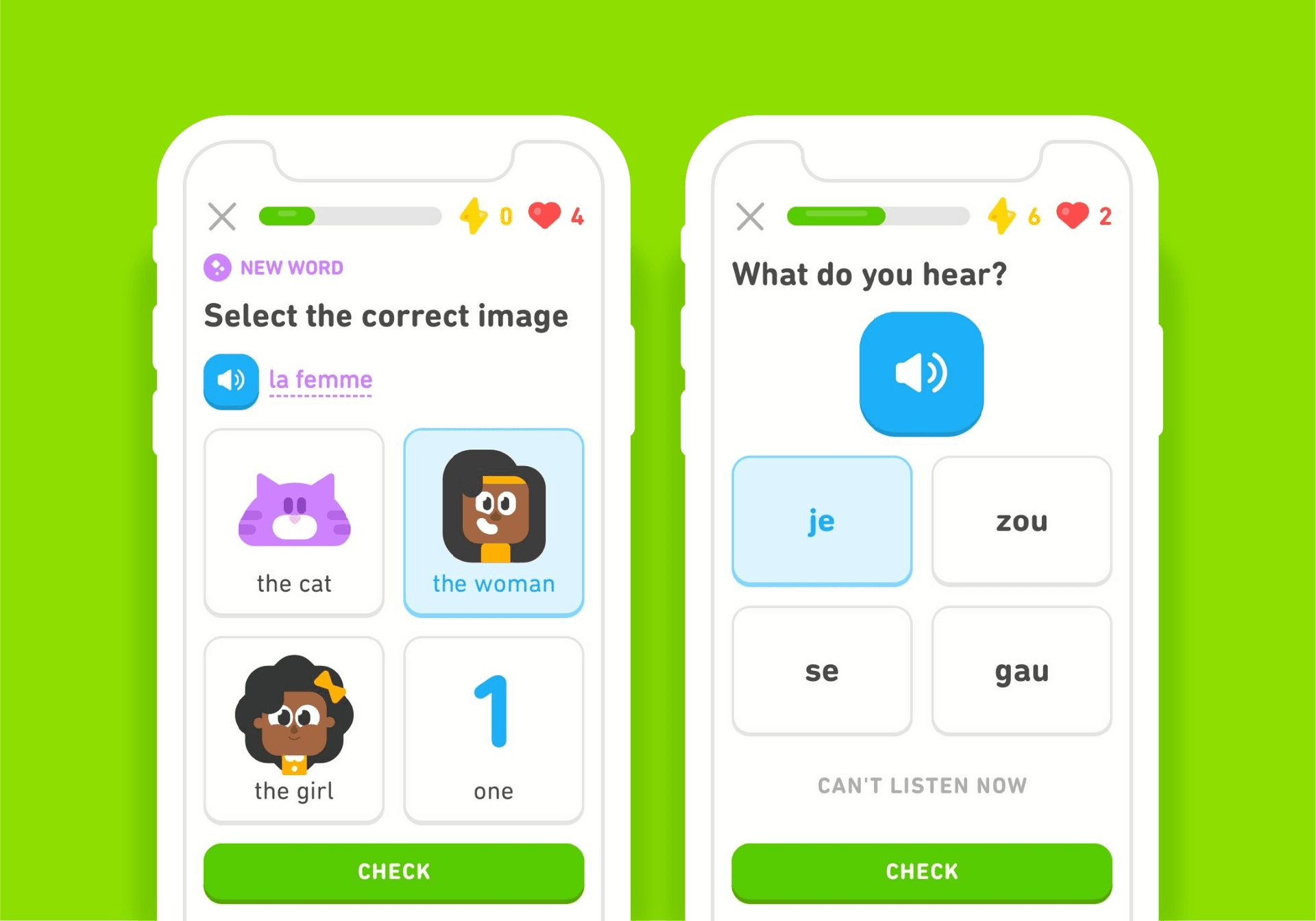
If you want to build a language-learning application, it'd be a good set of lessons: they are interesting, effective, and exciting. And you should supplement with your own ideas.
Achievements
The Dashboard screen also offers users to monitor their achievements, namely:
- Day streaks show the user's progress during the day: has he completed all the tasks? In addition, the user can edit his goal (if he decides to spend studying language more time per day).
- Crowns. The user is awarded the next crown only when a certain level of knowledge has been reached.
- Gems. As we’ve already explained, gems are award coins needed to buy stuff in the Duolingo shop.
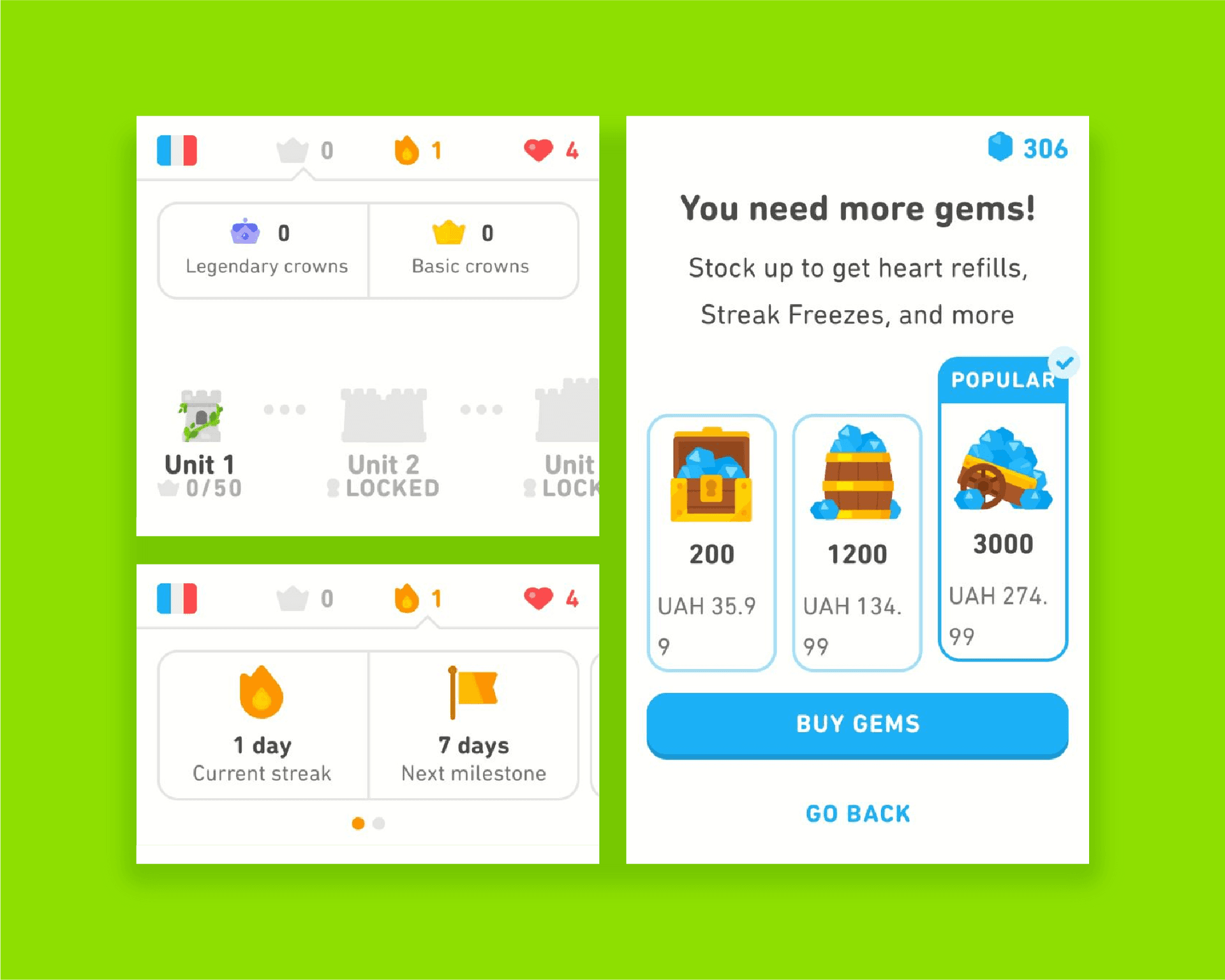
#4. Health
This is a very interesting feature, which made the Duolingo language learning application special.
When you study a new language, mistakes are inevitable. And Duolingo punishes users for such mistakes to force them to try very hard while learning.
It would be most obvious to take away the gems a user has earned. However, Duolingo acts differently: each mistake made weakens the virtual health of the user. And if the Health level has dropped to zero, then the user cannot continue the education process - he first needs to work on the mistakes.
Though, Health regains itself in the course of time.
Such an approach allows users to learn in the game format. Think about gamification, too, when creating a free language learning application like Duolingo (remember, we said how important it is?).

#5. Clubs
The Clubs feature provides the user with the possibility to interact with other Duolingo fans. He may create his own club or join one of the existing ones by taking advantage of the "Find me a club" option.
Thus, by creating a language learning app, Duolingo has also made a platform for the communication of people around the world. You, too, can follow the example.
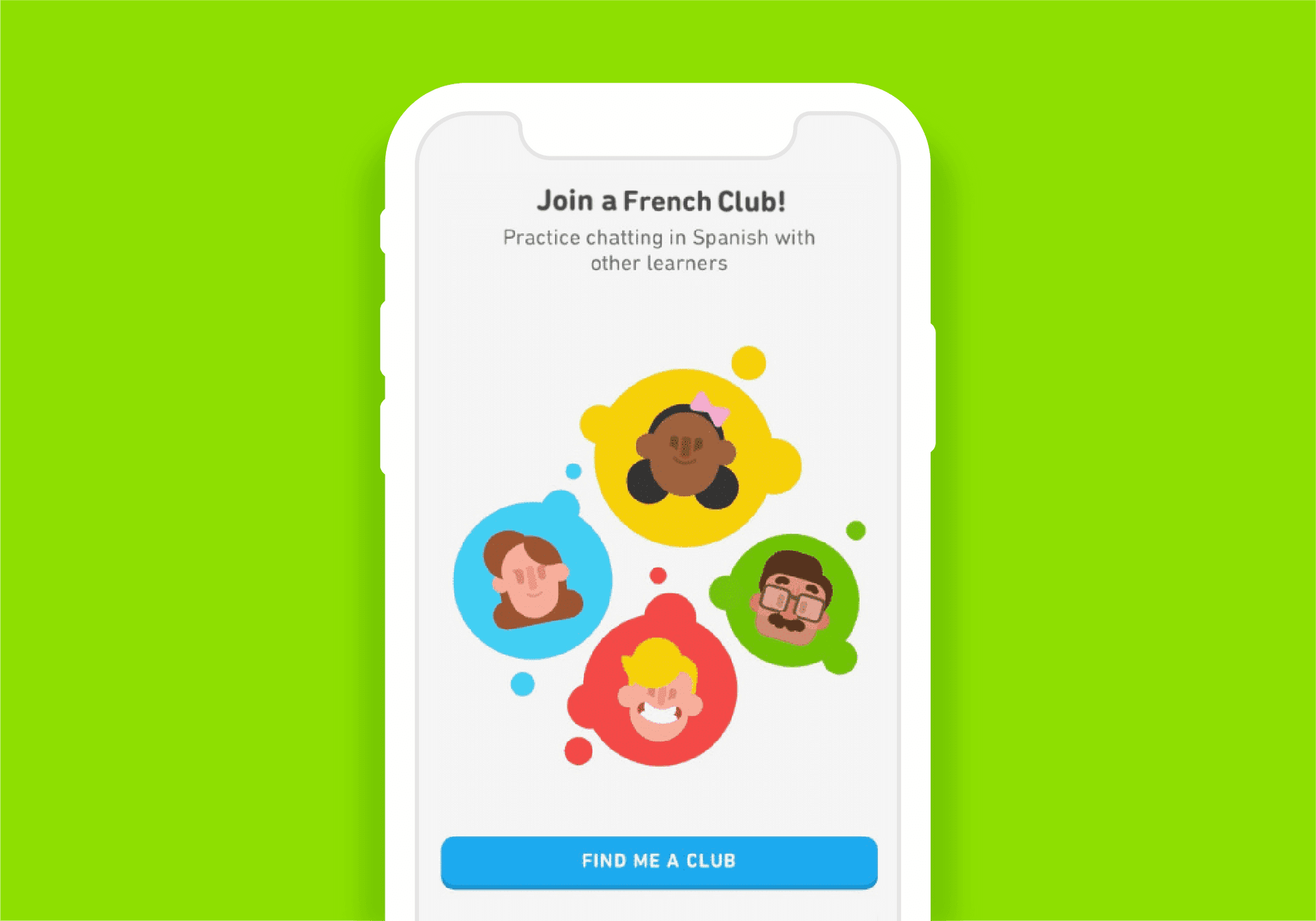
#6. Profile and settings
The personal profile contains all the information about the user and allows him to monitor his progress in training.
Of course, the profile is editable. And the user can change personal information or settings whenever he wants.
#7. Shop
The Shop feature offers turning gems collected during training into real purchases, somehow related to the use of Duolingo. And, by the way, these gems can be not only collected as a reward but also bought. And if you'd like to build a language learning app like Duolingo and monetize it, you need a lot of ways to make money on the application. And here is one of them.
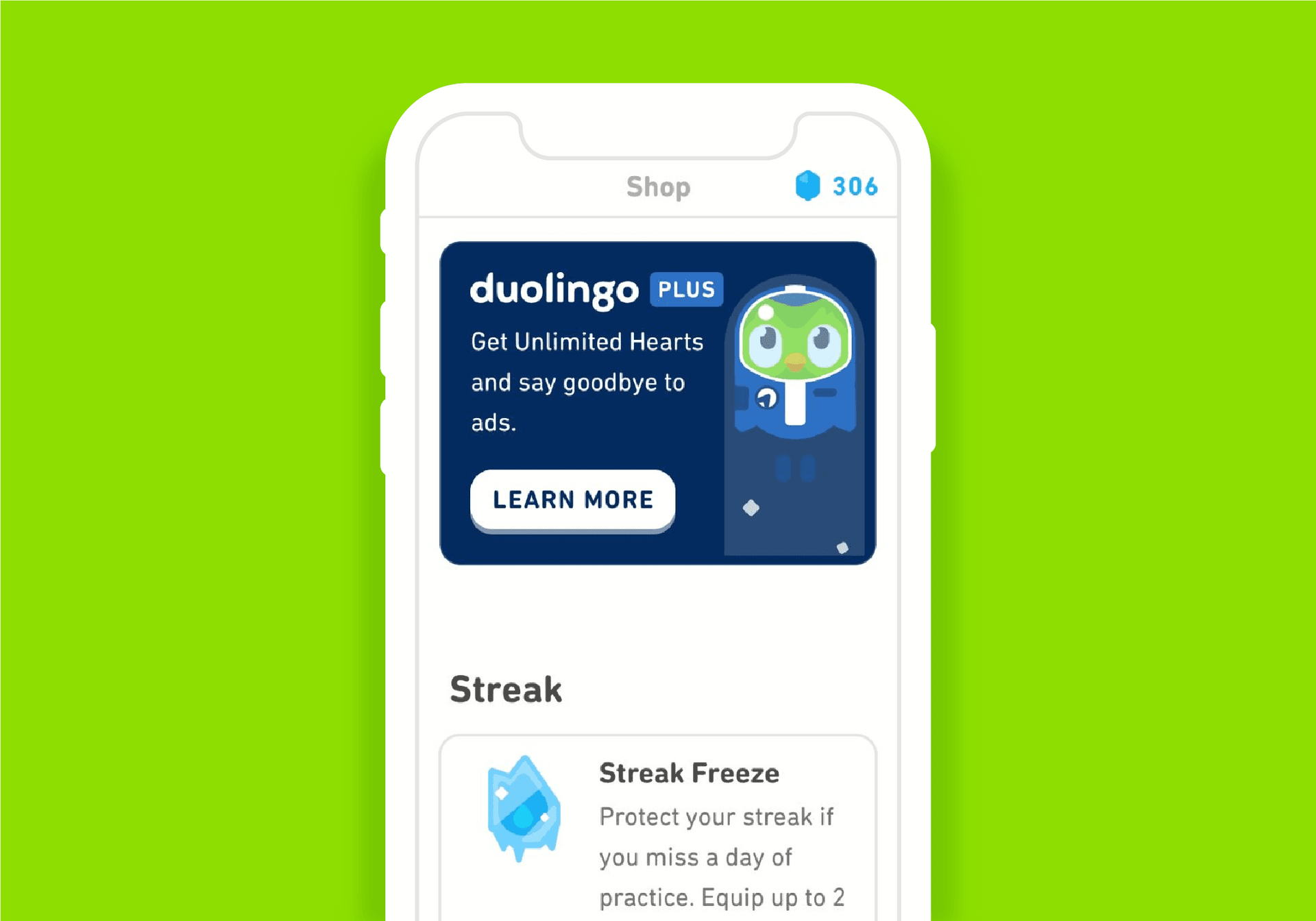
How Much Does It Cost to Build a Language Learning App Like Duolingo?
As you understand, creating a language learning app similar to Duolingo and Memrise requires a certain budget. The higher your financial capabilities, the more advanced functionality you can offer. If you are limited in funds, start with the MVP model.
However, now we are discussing the Duolingo mobile service. How much does it cost to develop a language app like Duolingo? Let's figure it out!
Design
The design stage includes:
- UI research & UX Map. At the initial stage, we are looking for the UI idea, that is, we define the design theme, the color palette, and other important details of the future interface. In addition, designers should make a UX map to determine the ease of use of such an application.
- Creating a logo. Usually, our designers offer several versions of the logo, so that the client can choose the best one.
- Development of application screens. Now we're talking about the most crucial step of the design stage, which requires maximum attention since there are incredibly many screens.
In general, the design stage lasts about 200 hours, and only 40-50 hours of them go to the formation of a UX map, the creation of a logo, and UI research. Most of the time is required to develop each app screen.
To build a language learning app Like Duolingo (with a design of the same level of complexity), you have to pay about $ 5,000-7,000.
Development
Language app development includes the following steps:
- iOS, Android development. Ideally, your language learning service should be compatible with a variety of devices.
- Backend development.
- QA engineering to test the product
- Publication of the language application.
The language app development step requires about 1000 hours (which is equivalent to $25,000 - 35,000).
All the above prices are based on $ 35 per hour. Such a rate is usually asked by IT specialists in Eastern Europe ($35-56 per hour). Of course, if you prefer companies from other countries, your costs can increase several times (since the rate of American and West European developers is very high and sometimes reaches $ 150 per hour).
And don't forget all these calculations relate to the Duolingo functionality. If you want to build a language-learning application of your own, its cost will be different. The price depends on the language learning app idea, its complexity, the number of supported platforms, the design style, etc.
Conclusions
As you understand, you’ll have to hire specialists to implement your idea of the language application. Here are briefly the steps that you should take:
- find the right format for your Duolingo language learning application, think through all the details.
- hire developers. We have already written about the best ways to find a developer - use our tips to cooperate with experts in the extra class.
- make a list of requirements for the language learning application. Let the developers tell you which of your ideas can be implemented technically and how much it will cost. This information will help you make up a list of app features.
- take care of marketing support. While the development process is in progress, think about the advertising campaign. Definitely, it's not enough to make a language application, your task is to popularize and promote it!
We hope now you understand how to make a language learning app. Striving to become even more useful, we offer you our services on app development.

